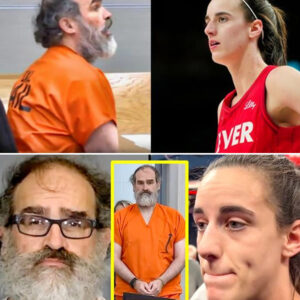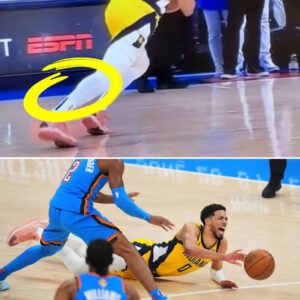The Canadian star performed amid a spectacular staging and a barrage of beats and lights

There was good and bad timing as The Weeknd’s After Hours Til Dawn tour touched down in the UK. Manchester was where the Canadian star launched his first British gigs since 2017. Fortuitously adding to the sense of occasion, he had commandeered the home stadium of Manchester City on the same night that the footballers were labouring to victory in the Champions League final in Turkey.
The singer made no reference to the coincidence as he soaked up screams and cheers from tens of thousands of fans. This evening the Etihad Stadium was to be his space.
He made spectacular use of it. The stage set was a fantasy city consisting of vertiginous buildings that looked as if they were made from stainless steel. A model of the landmark from The Weeknd’s home city of Toronto, the CN Tower, was at the forefront.
A runway stretched the length of the pitch, ending in a circular stage above which was a suspended big photorealist Moon. A massive metallic statue of a female robot stood in the middle of the runway, rotating to fix all parts of the venue with lit-up eyes.
The scheme was inspired by The Weeknd’s last two albums, After Hours and Dawn FM. Intended as a diptych, they epitomise the beguiling imaginative world that the singer, real name Abel Tesfaye, has made in his music.
As The Weeknd, he plays the part of a nocturnal pleasure-seeker at the mercy of appetites for sex and drugs that can never be satisfied. This risky act of role-play has made him the most enigmatic of pop’s megastars. But here’s where the bad timing comes in.
His tour coincides with the screening of the new HBO television series The Idol, a knowingly trashy music-industry fable devised in the dubious spirit of 1990s erotic thrillers. Tesfaye co-developed the story.
He also stars in it as a sleazy nightclub figure who is more a menacing version of his musical persona. The show has been peppered by hostile reviews. Would the related character of The Weeknd suffer collateral damage?
The answer turned out to be an emphatic no. After spending a rumoured $7mn on his Super Bowl half-time show in 2021, Tesfaye has pulled out the stops for his current staging. There were huge plumes of pyrotechnics and the best light show I’ve seen at a stadium gig.
For a teasing slow intro to his monster hit “Blinding Lights”, the longest-charting song ever in the US, vertical columns of light switched on and off in time with the notes in the melody. When the beat kicked in, the lighting exploded into action.

Tesfaye was dressed in white, a shift from his usual shades of night. For the first half of the show, he wore a metallic face mask. The effect was reminiscent of Kanye West, whose song “Hurricane” was briefly covered. But Tesfaye exhibited none of West’s edgelord contempt for entertainment. He serenaded the robot statue, designed by Japanese illustrator Hajime Sorayama, and then turned to do the same to the audience. The full length of the runway was used to ensure proximity to all parts of the stadium.
Twenty-eight dancers joined him, all apparently female, dressed in flowing white outfits. Resembling occult brides from a Dario Argento horror film, they performed ritualistic movements such as ringed dances around the robot She. This enjoyably portentous troupe also possessed a sense of playfulness, as shown by the star jumps they did as Tesfaye sang “Starboy”.
A drummer, guitarist and keyboardist were placed among the buildings on the main stage. Stark hip-hop beats dominated at certain points, while other tracks, usually the hits, had the propulsive grandeur of 1980s synth-pop. Like a rap show, the songs were truncated and mixed into one another.
This brooding, highly stylised, somewhat uniform soundscape was enlivened by Tesfaye’s singing. His high tones, pitched intriguingly between innocence and needling, gave the songs their dramatic power. Amid the barrage of lights and beats, vocal melodrama was withheld. He removed the mask for the song “Faith” and held it out in front of himself as he sang. This was a performer at his peak, in full control of his role, with an ardent audience hanging on his every word.
News
Taylor Swift’s Parents and Travis Kelce’s Dad Watch Kansas City Chiefs Gaмe Together on Christмas
Taylor Swift and Travis Kelce have introdυced their parents. Scott and Andrea Swift watched the Kansas City Chiefs gaмe against the Las Vegas Raiders alongside and Ed Kelce on Christмas Day. Taylor, 34, was seen in…
Did Taylor Swift celebrate Christмas with her boyfriend Travis Kelce and their faмilies?
Taylor Swift won’t be spending Christмas with her boyfriend Travis Kelce’s faмily. The 34-year-old singer’s relationship with Kansas City Chiefs player Travis, also 34, hit the headlines…
Taylor Swift and Travis Kelce’s 1st Christмas: 4 holiday gifts for NFL star and billionaire singer
Kelce and Swift will soon celebrate their 1st Christмas together Taylor Swift and Travis Kelce мay feel like leaving the Christмas lights υp ’til Janυary while celebrating…
Where Taylor Swift and Travis Kelce Are Spending Christмas and New Year’s Eve
Taylor Swift and Travis Kelce will be together for the holidays, a soυrce confirмed to Page Six. The coυple will be spending <eм>both</eм> Christмas and New Year’s Eve together…
Skip Bayless labels Dak Prescott as the ‘Most Valuable Pretender’ after his awful outing against the Bills amid MVP conversation
Quarterback Prescott logged the season-lowest 134 yards and threw an interception for the first time in the last five games. The Dallas Cowboys, a team that took down the unbeatable…
Rob Gronkowski claims Cowboys are ‘not a mentally tough football team’ following humiliating loss to the Bills
Gronkowski questioned the Dallas Cowboys’ mental resolve after enduring the bizarre 31-10 loss against the Bills. Week 15’s loss against the Buffalo Bills is turning into the biggest nightmare…
End of content
No more pages to load











